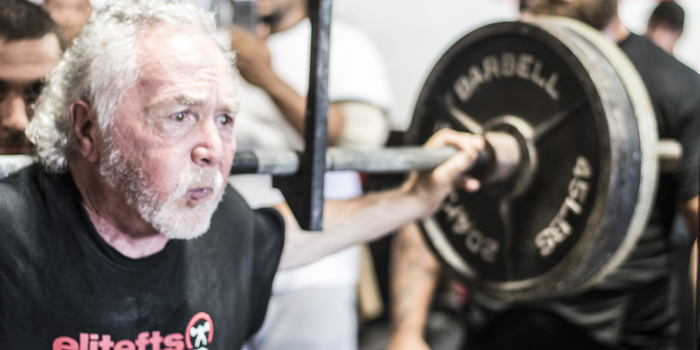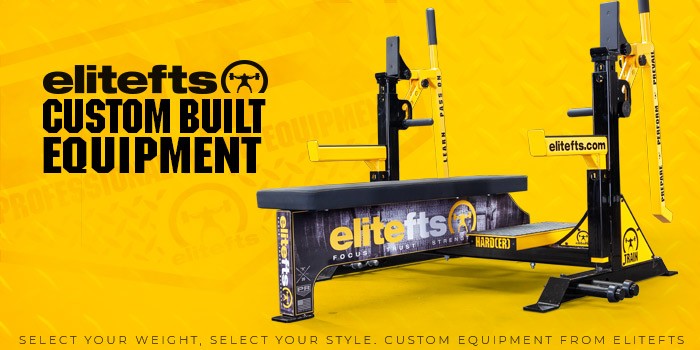
I participated in a seminar at our gym recently. It was generally addressed to new powerlifters, some bodybuilders, and a few exercise enthusiasts. We talked about some of the things that we taught and learned at the LTTX, and some things that I thought needed to be said to this group.
RECENT: Learn to Train X — What We Taught and What We Learned
First, I confessed to them (as I am confessing to you) about a problem that I have; it is part of the reason that I moved to the Morganton area. Morganton is the town in N.C. that houses the NC Mental Hospital. In addition, there are numerous private and public facilities that offer assistance to individuals with special problems. Because I am now getting the help I need, I can tell you about my problem: I am a “coachaholic.” Whenever I see someone do something in the gym that I think they could do better, I feel compelled to tell them. Sometimes they say thank you; sometimes they say, “Go to hell and get out of my workout”. I go to meetings, I see a counselor, and there are specialists here that work with me on my situation. I am getting better at minding my own damn business!
Topic 1
The best athletes in the world are in the ATP (tennis), NBA, WNBA, NFL, MLB, NHL, and the events and sports of the Olympics. These men and women are the best of the best; they are at the pinnacle of their respective careers. And, they all have one thing in common: THEY ALL HAVE A COACH. Some not only have a coach, but also a trainer, training partners, and a sports psychologist. Most of these athletes are better than their coach, or better than their coach ever was – they know how to play their sport. Nevertheless, they have a coach. Why? Because it takes a herculean effort to get to the top of any game. It is even harder to stay there! We all have human frailties, both physical and mental – a coach is there to help with both. He is there for a kick in the ass or a pat on the back (whichever is appropriate at the moment). Any athlete who thinks that he doesn’t need a coach is sadly mistaken. Now, we can’t all afford our own personal coach. So, find and join a team that has one. At least participate in a group where someone can look objectively at what you are doing and give you honest feedback. Oh, but I video my training and can see what I do. Tell me, how does you looking at you give you honest and objective feedback?
If you cannot find a team with a coach, then train in a group where you can get honest and objective feedback from its members. It’s been proven that training in a group makes everyone in the group stronger. Everyone helps everyone, and no one wants to fall behind. As each individual makes progress, everyone makes progress. I have been very fortunate to have had people in the gym where I train, who have helped me and given me honest and objective feedback – whether I liked what they said or not. It is very difficult to train without an honest, objective eye.
Topic 2
I hate to walk out a squat! I compete in federations where I don’t have to. I still have to walk out in training, and I coach some lifters who compete in federations in which it is required. For that reason, and because we talked about it at the LTTX seminar, we addressed it. A walk-out should be two steps, settle, and squat. Not two steps and adjust your feet, not two steps and a little dance, but two steps – period! It is so very difficult to walk out with a ton of weight on your back – I get that. It is a hell-of-a-lot easier for me to say it than it is to do it. However, with a maximum load on your back, it becomes even more imperative to be efficient. The longer the weight is on your back, the more energy is used. If you simply stand with a maximum weight for ten seconds, you will see how much energy is used. TWO STEPS! Hurry very carefully; hurry slowly. Now that it has become an issue for me, I noticed at a meet at which I was an official, that not one participant did it correctly.
Topic 3
In talking to new powerlifters, there are certain instructions and cues to which they all must adhere. There are some absolutes in every lift: sit back, shoulder blades together, spine neutral, knees out, hips through. Everyone also has some things that they must do. Therefore, we try to tailor the lift to be the most efficient for each lifter. Because no two powerlifters are built exactly alike, our movements will be somewhat different. When my mother died some years ago, I thought her famous brownie recipe was lost to posterity forever. I later found that my sister had it, and that it would survive for at least another generation. However, my sister’s brownies were not exactly like my mother’s. Her cooking time may have been different; she seemed to use more nuts. I tried it, added more raisins and chocolate chips, used a shorter baking time, and liked them. My brother tried the recipe and his product was different from each of ours. Even with the same recipe, we each had a different result.
I find the bench press to be the most technical of the lifts. This may be because I did it incorrectly for so many years. Because of my particular quirks and injuries, it took me quite some time to get into a correct pattern. Dave Tate, recognizing my individual problems, straightened out my bench press in one session. It has, however, taken many sessions and some time to get it right. It is axiomatic that the powerlifting bench press is vastly different than what we perceive to be the bench press. It is, in fact, a complete body exercise, not something just for pecs and triceps. It seems to take forever to get it, and another “forever” to perfect it. The rule of pinkies on the rings is often misused; if you are over six feet tall, it is too narrow; if you are under five feet tall, it is too wide. Too often I have seen guys who seem to be a foot taller than me with the same grip as mine. Not good! Slight adjustments often cause their PR’s to soar. How many of you talk to your hand-off man? When do you take in big air? Work out a system where you concentrate on filling your core with air and let your hand-off man do the talking. Then the technical aspects of arch, leg drive, shoulders back, and bend the bar come into play. It’s quite gratifying working with beginners because they progress so quickly. Working with accomplished lifters has great rewards as well: a little polish to technique can cause a stuck PR to quickly be surpassed. Therefore, it’s putting in the work – let the marathon begin.
Topic 4
What is the best method of recovery? Differences of opinion abound. Body-tempering, massage, sauna, whirlpool, chiropractic, and acupuncture methods all have a place. They are all great prehabilitation and rehabilitation recovery methods, and most athletes make use of all of them from time to time. However, the best method of recovery is SLEEP – pure and simple sleep. None of us seem to get enough, and we would all be better off in our recovery if we did.
Topic 5
We finished with some advice: have a goal! A powerlifting goal, a bodybuilding goal, or a general exercise goal. Train to get better, surpass PR’s, or to get ready for a competition. Lose weight, get bigger, get stronger, look better. Have a goal – any goal – and work relentlessly towards it. Try and find people with whom to train who are smarter, stronger, more experienced, and more knowledgeable than you, and learn everything that you can from them. Most gym rats have some coachaholic tendencies like me. So: ASK! Find someone in your gym who appears to know what he is doing, and ASK. In most cases, you will find that he is only too happy to help, and may soon adopt you as a training partner.










